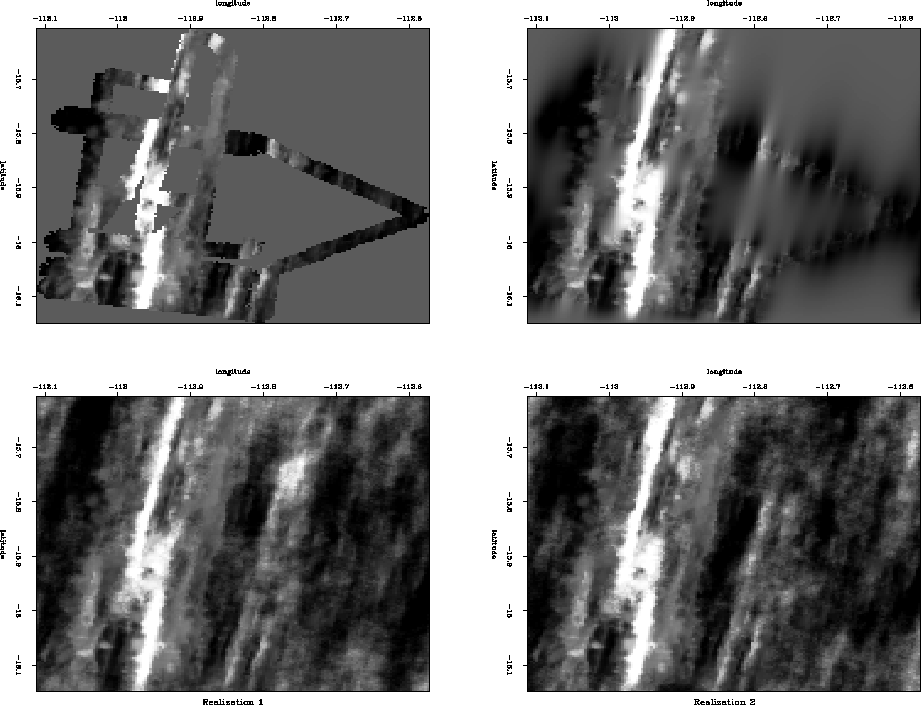




Next: Infill of 3-D seismic
Up: TWO-STAGE LINEAR LEAST SQUARES
Previous: Adding noise (Geostat)
In geophysical estimation (inversion) we use model styling
(regularization) to handle the portion of the model that
is not determined by the data.
This results in the addition of minimal noise.
Alternately, like in Geostatistics,
we could make an assumption of statistical stationarity
and add much more noise so the signal variance in poorly determined
regions matches that in well determined regions.
Here is how to do this.
Given the usual data fitting and model styling goals
|  |
(32) |
| (33) |
We introduce a sample of random noise  and fit instead
these regressions
and fit instead
these regressions
|  |
(34) |
| (35) |
Of course you get a different solution for each different
realization of the random noise.
You also need to be a little careful to use noise  of the appropriate variance.
Figure
of the appropriate variance.
Figure ![[*]](http://sepwww.stanford.edu/latex2html/cross_ref_motif.gif) shows a result on the SeaBeam data.
bobsea
shows a result on the SeaBeam data.
bobsea
Figure 20
Top left is binned data.
Top right extends the data with a PEF.
The bottom two panels add appropriately
colored random noise in the regions of missing data.
![[*]](http://sepwww.stanford.edu/latex2html/movie.gif)





Bob Clapp developed this idea at SEP and also
applied it to interval velocity estimation,
the example of Figures ![[*]](http://sepwww.stanford.edu/latex2html/cross_ref_motif.gif) -
-![[*]](http://sepwww.stanford.edu/latex2html/cross_ref_motif.gif) .
.





Next: Infill of 3-D seismic
Up: TWO-STAGE LINEAR LEAST SQUARES
Previous: Adding noise (Geostat)
Stanford Exploration Project
4/27/2004
![[*]](http://sepwww.stanford.edu/latex2html/cross_ref_motif.gif) shows a result on the SeaBeam data.
shows a result on the SeaBeam data.

![[*]](http://sepwww.stanford.edu/latex2html/cross_ref_motif.gif) -
-![[*]](http://sepwww.stanford.edu/latex2html/cross_ref_motif.gif) .
.